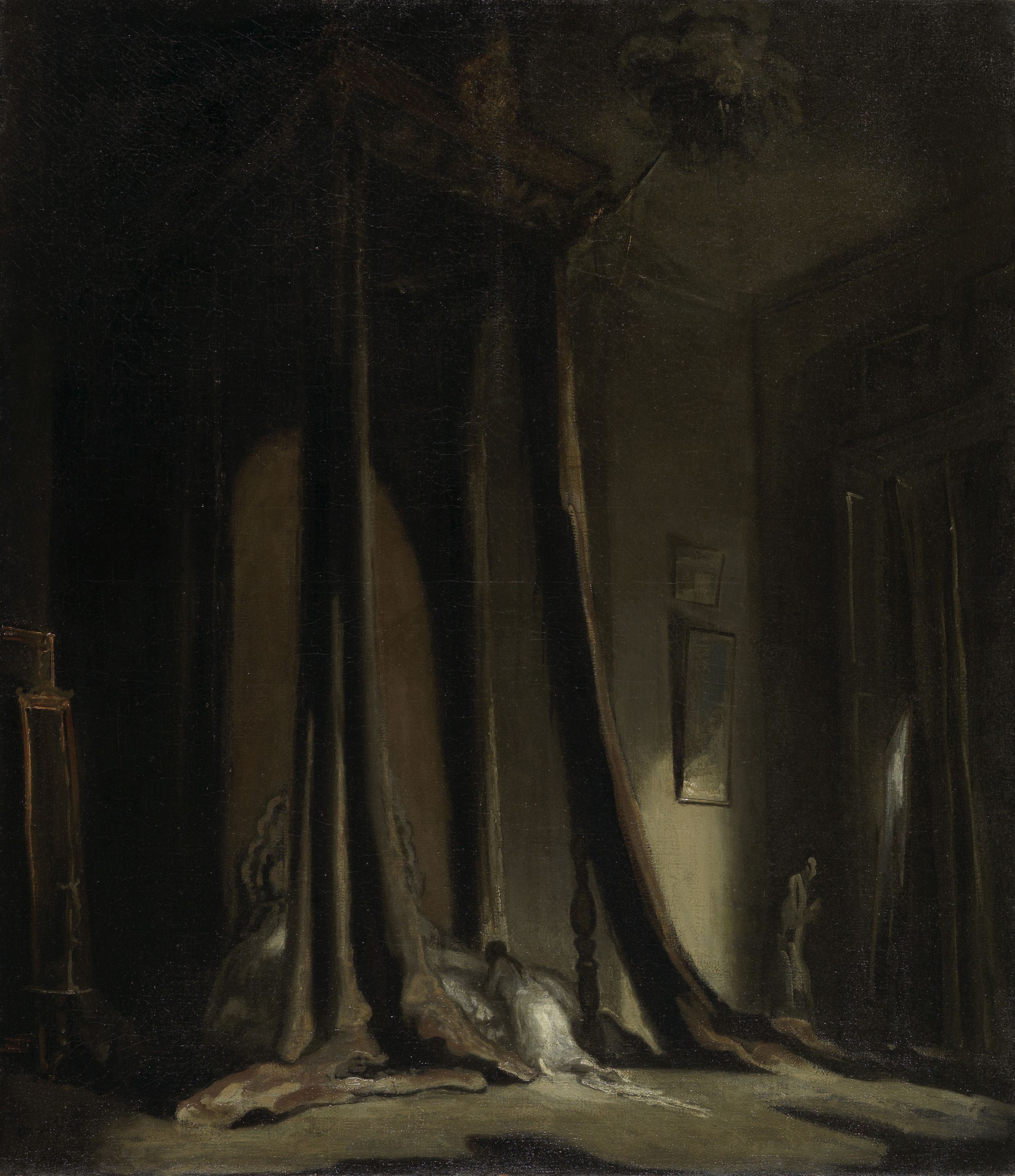Beggarstaffs:
William Nicholson & James Pryde
New exhibition puts the University's collections of two leading figures in
Modern British Art into context for the first time.
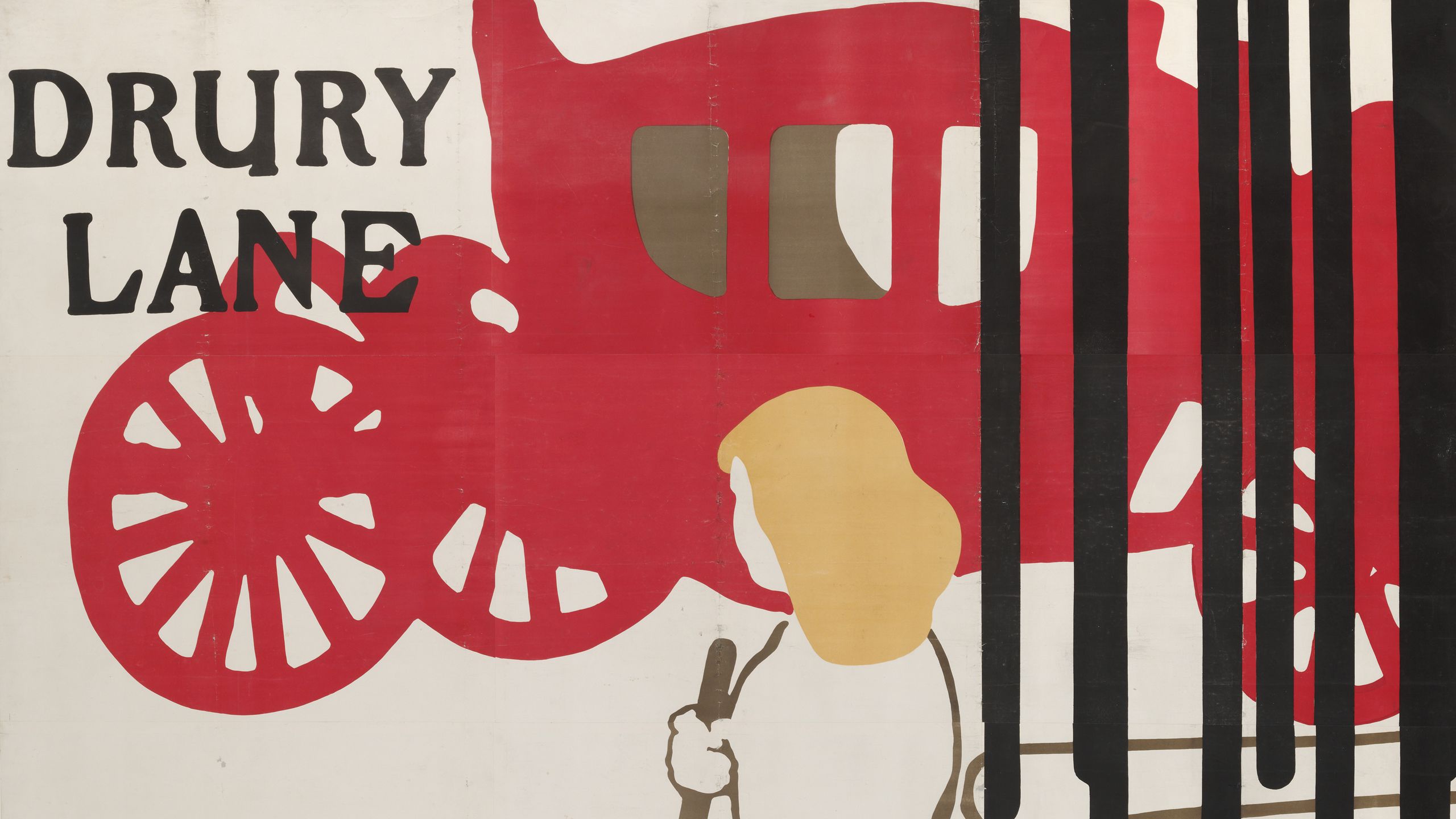
"Astonishingly the Beggarstaff's ground-breaking poster designs and their subsequent individual work as painters have never before been gathered together in a single exhibition until now."
Stephen Calloway, Historian and Exhibition Curator
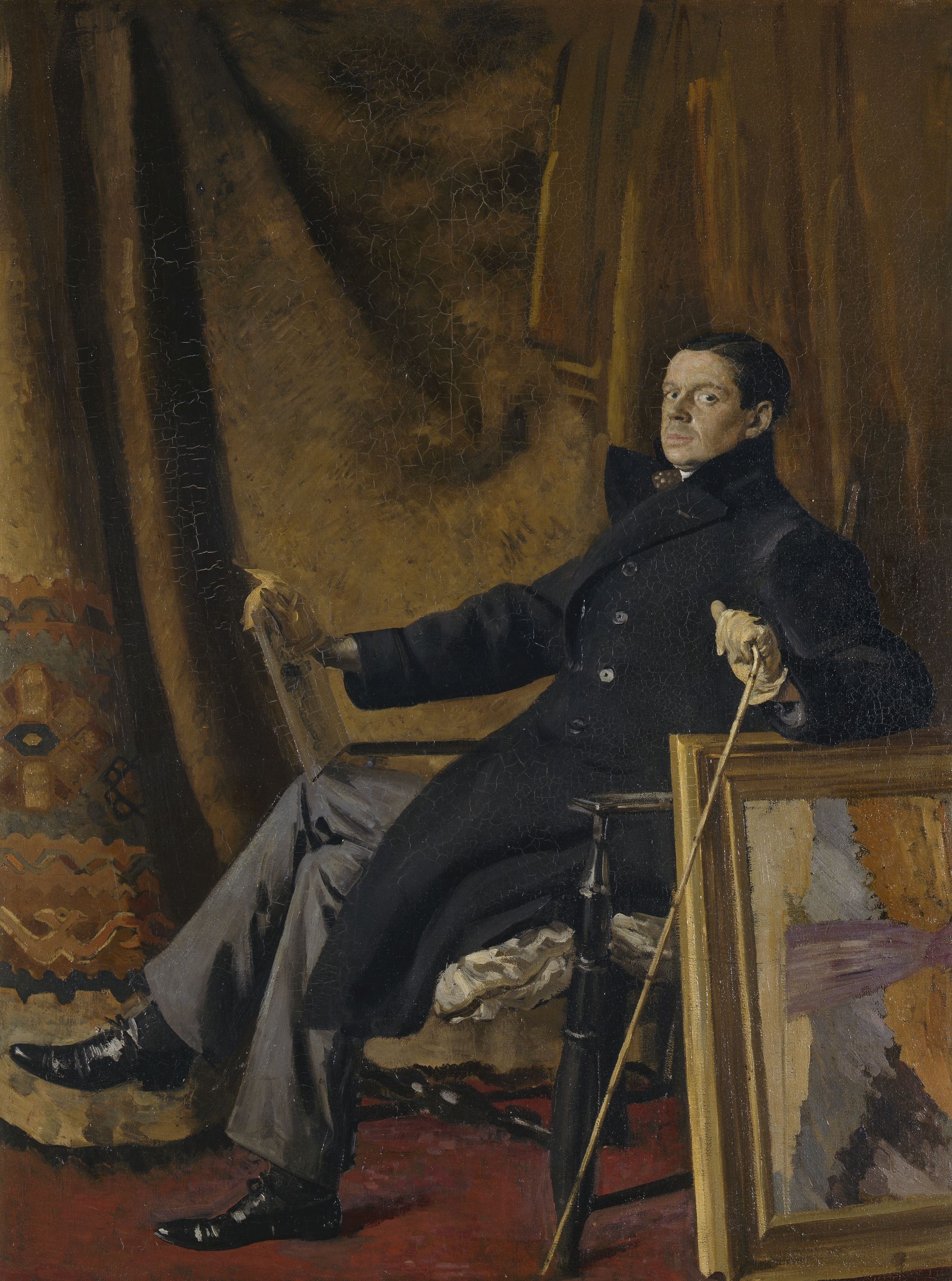
The 1890s was the first great age of the pictorial poster. Two leading figures in the development of Modern British art, William Nicholson (1872-1949) and his brother-in-law James Pryde (1866-1941), were at the beginning of their careers, struggling to sell pictures, and saw opportunities to exploit the newly burgeoning market for posters.
They established an avant-garde artistic partnership, and called themselves ‘the Brothers Beggarstaff’. Their startlingly innovative style entirely revolutionised poster design.
Now, several of the largest and finest Beggarstaff posters, rolled- up and unseen for decades, are on loan to the University of Cambridge's Fitzwilliam Museum from the V&A. Alongside other important works from Her Majesty The Queen and other private lenders, they now put the University’s significant individual collections of Pryde and Nicholson's work into context for the first time.
Stephen Calloway, who curated the exhibition, said, "I had long wanted to stage an exhibition that placed Nicholson and Pryde's partnership as the 'Brothers Beggarstaff' in the context of their subsequent, equally influential individual careers as painters.
"Cambridge University’s important collections of their work, populated with key loans, now bring their entwined narrative together for the first time and have enabled me to tell their story."
The Beggarstaffs' posters were created using entirely novel techniques involving collaging cut-paper shapes or stencilling flat colour onto huge sheets of ordinary brown wrapping paper. Their striking simplicity, relying on outline and silhouette to suggest forms, demonstrated the young artists’ idea that a poster must be effective, even when merely glimpsed from a moving horse-bus.
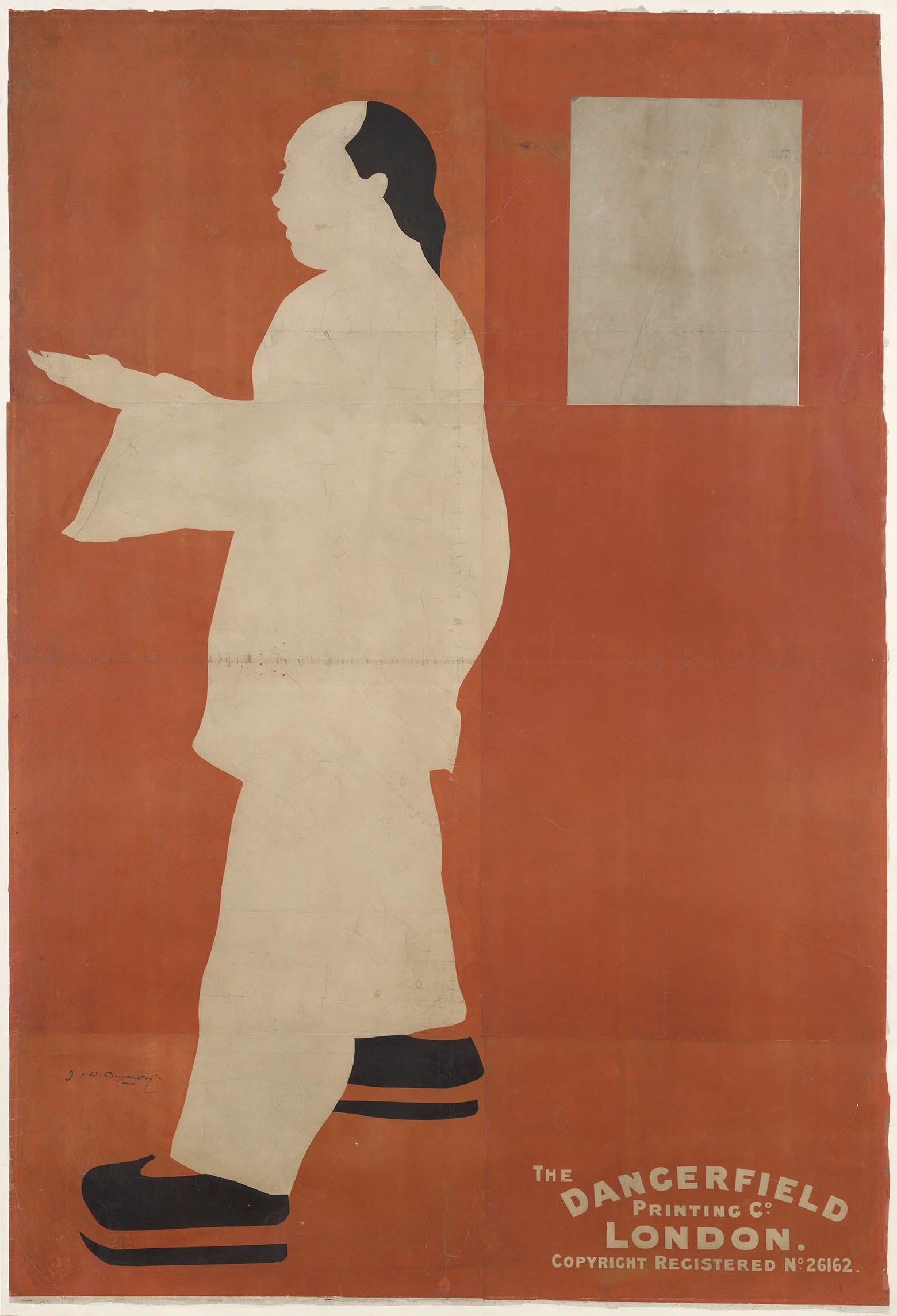
The Beggarstaff Brothers, A Trip to Chinatown musical poster, 1895 © Desmond Banks / © Victoria and Albert Museum, London
The Beggarstaff Brothers, A Trip to Chinatown musical poster, 1895 © Desmond Banks / © Victoria and Albert Museum, London
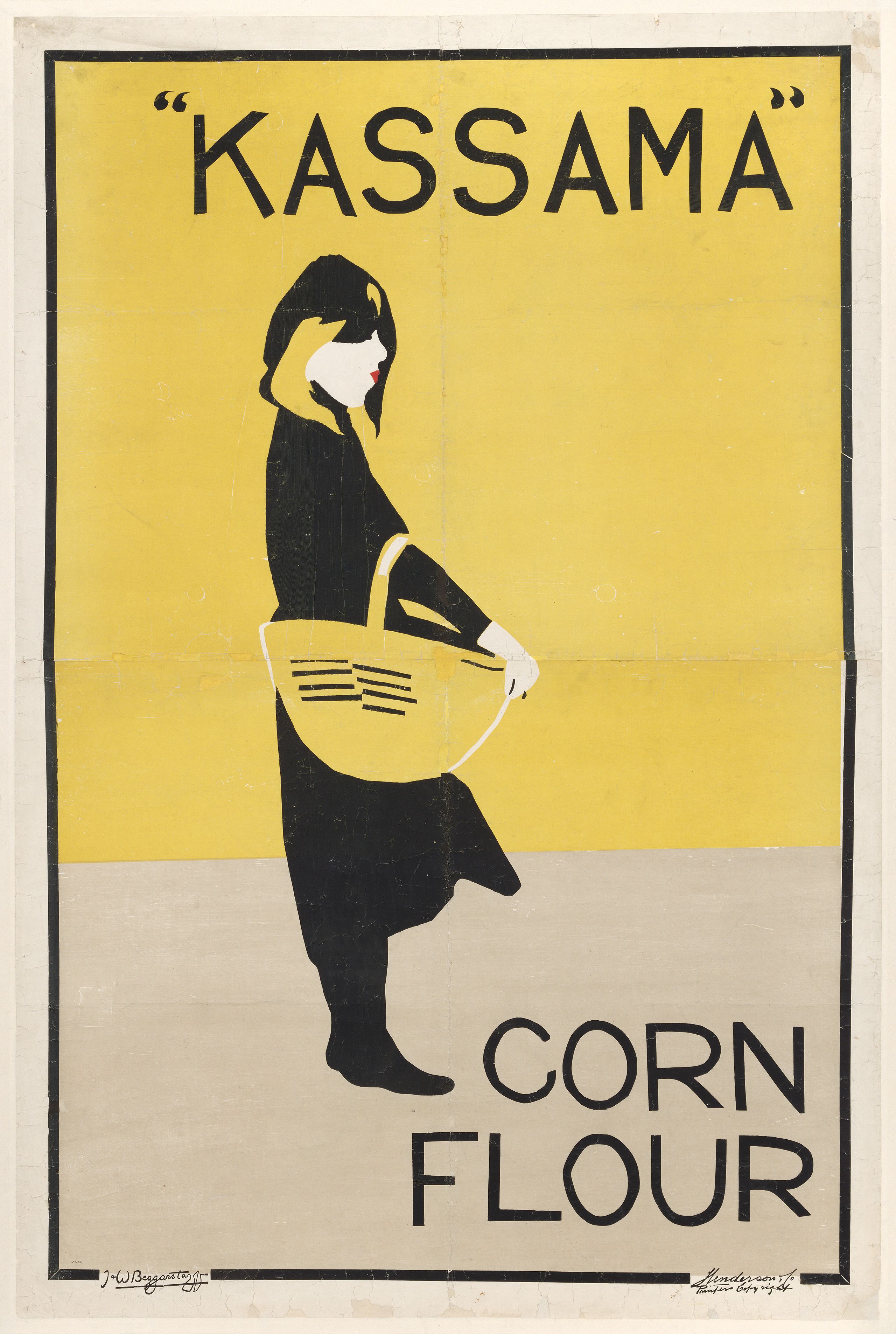
The Beggarstaff Brothers, ‘Kassama’ Corn Flour, 1894 © Desmond Banks / © Victoria and Albert Museum, London
The Beggarstaff Brothers, ‘Kassama’ Corn Flour, 1894 © Desmond Banks / © Victoria and Albert Museum, London
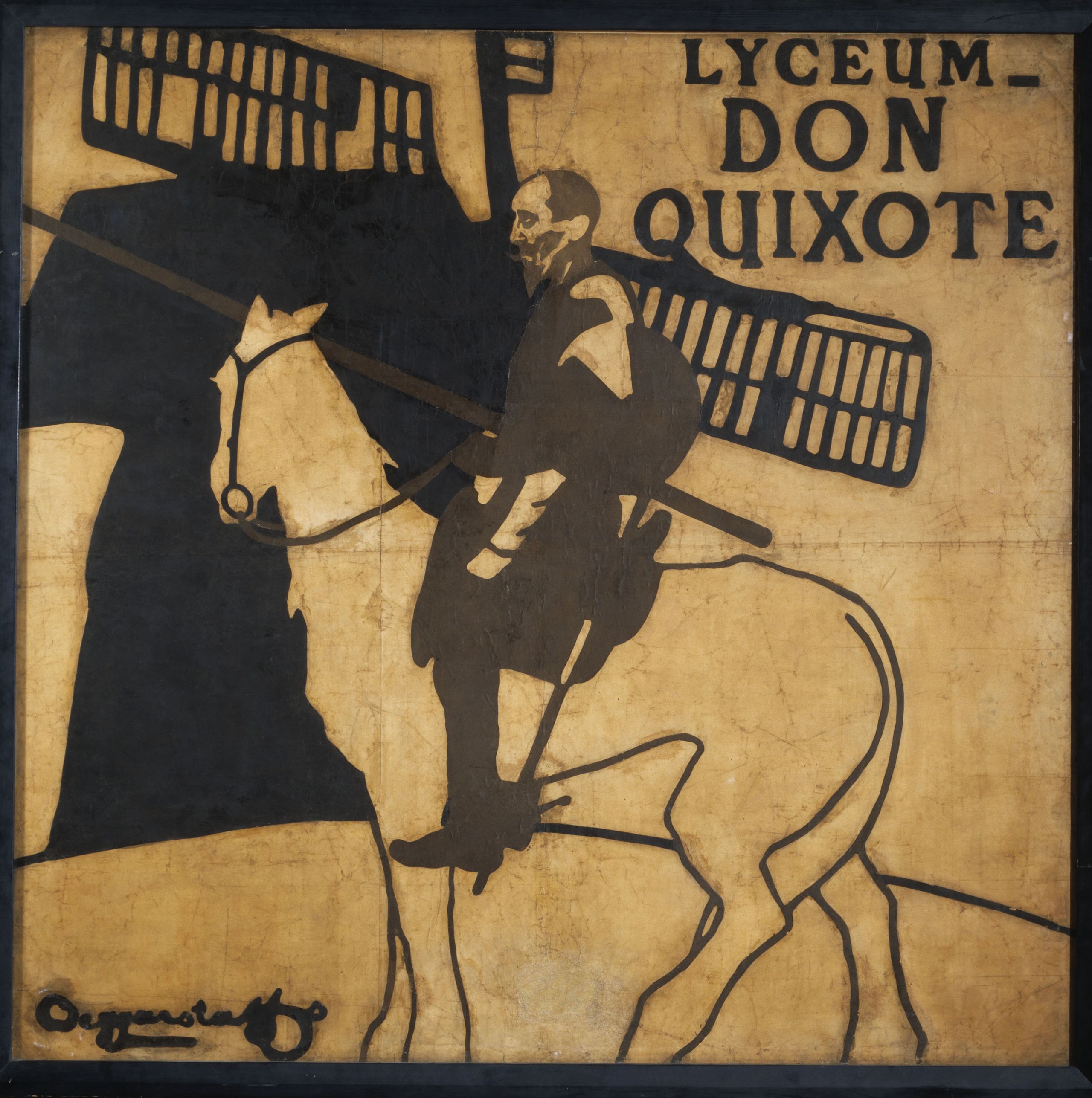
The Beggarstaff Brothers, celebrated Don Quixote poster for Henry Irving’s Lyceum Theatre production, 1895 © Desmond Banks / Image © Victoria and Albert Museum, London
The Beggarstaff Brothers, celebrated Don Quixote poster for Henry Irving’s Lyceum Theatre production, 1895 © Desmond Banks / Image © Victoria and Albert Museum, London
Their posters were to prove too avant-garde for the advertisers of the day, and Pryde and Nicholson gradually resumed their individual careers as painters.
Nicholson, always the more ambitious, realised that in an era when popular imagery was increasingly prized, design and print-making skills offered another route to success. He turned his hand to wood engraving and had found his new métier. Lucrative deals with the publisher William Heinemann swiftly followed and over several years they created a sequence of popular print volumes including An Alphabet, An Almanac of Sports and London Types.
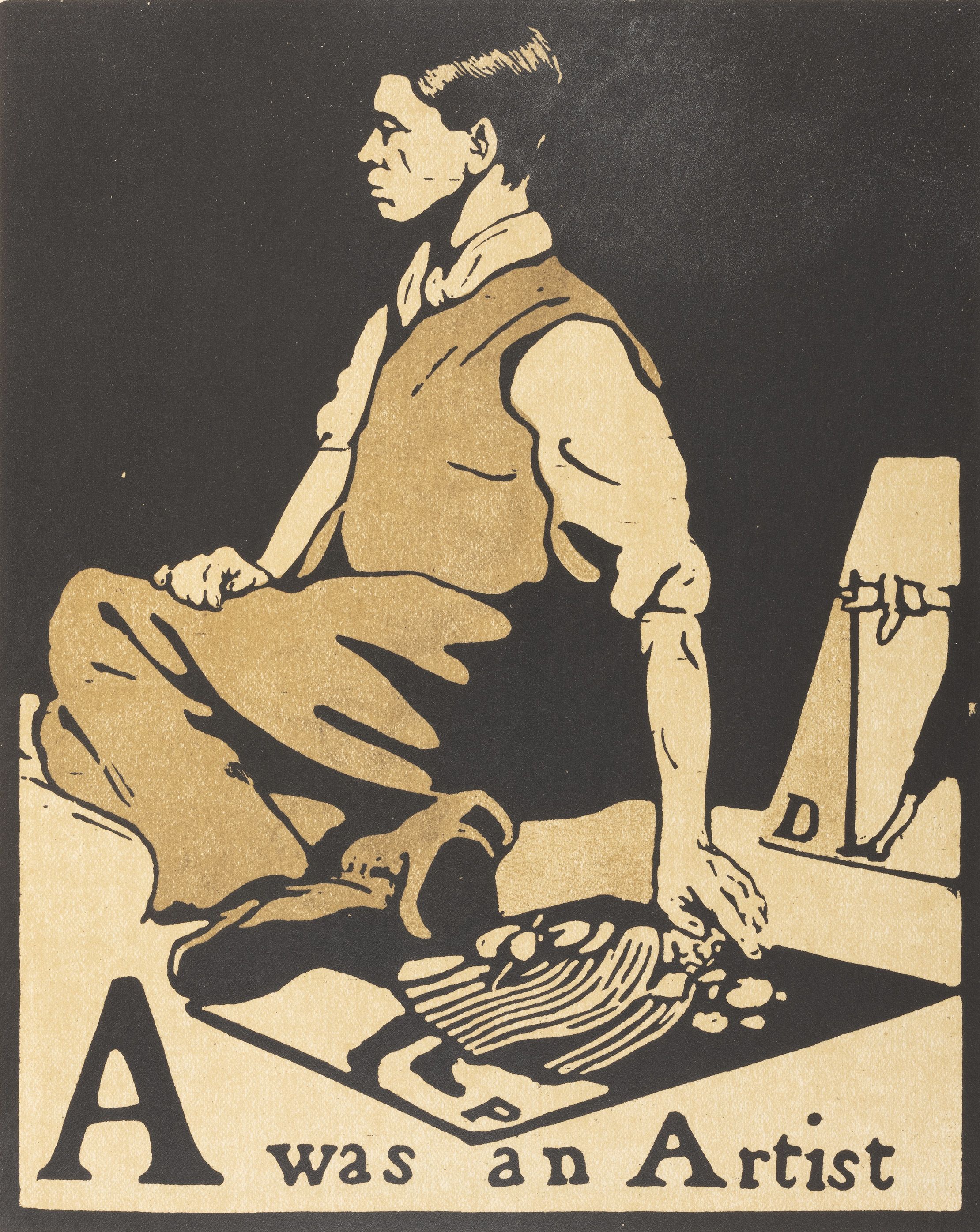
Sir William Nicholson, An Alphabet, A was an Artist © Desmond Banks / © Fitzwilliam Museum
Sir William Nicholson, An Alphabet, A was an Artist © Desmond Banks / © Fitzwilliam Museum
The Fitzwilliam’s group of later oils by Nicholson further unfold the intriguing narrative of his progression from print maker to one of the greatest of Modern British painters, whose skill lay in capturing the precise play of light on different surfaces in brushstrokes of consummate skill. Many examples from the Fitzwilliam's permanent collection are exhibited in the show.
"Some art-lovers will already think they know a bit about one half of the Beggarstaffs - Sir William Nicholson - as painter of gleaming silver and lushly, luxurious roses, who became a pillar of the artistic establishment, sought out as a portraitist, awarded a knighthood, and quite as grand as he appears in the Fitz’s portrait of him by Augustus John."
Pryde, on the other hand, like the 17th-century creators of architectural fantasy landscapes, worked essentially from the imagination, inventing dark ‘sinister corners’ and 'death beds' that appear as stage-sets conjured from childhood memories of Edinburgh's Old Town and Mary Queen of Scot's bedchamber at Holyrood Palace. Pryde's productivity would never equal Nicholson’s and gradually he stopped painting altogether as his life became more chaotic.
Watch BBC Fake or Fortune visit the Fitzwilliam Museum below to look at some of the University's permanent collection of Nicholson's work.
Sir William Nicholson, Begonias, © The Fitzwilliam Museum. The painting can be viewed in Gallery 1.
Sir William Nicholson, Begonias, © The Fitzwilliam Museum. The painting can be viewed in Gallery 1.
Flamingoes, 1891, is one of the most interesting of Nicholson’s very early works in the permanent collection of the Fitzwilliam. Young painters in the 1890s were keen to experiment with unconventional subjects and unusual viewpoints. Nicholson made this quirky study of exotic birds in the Jardin d’Acclimatation during his first visit to Paris. However, the detail of the wire-mesh cage and the shadow of the artist’s own head coming into the picture - a favourite conceit of Nicholson’s - were added years later, perhaps following a French trip made with his last companion Marguerite Steen in the autumn of 1937.
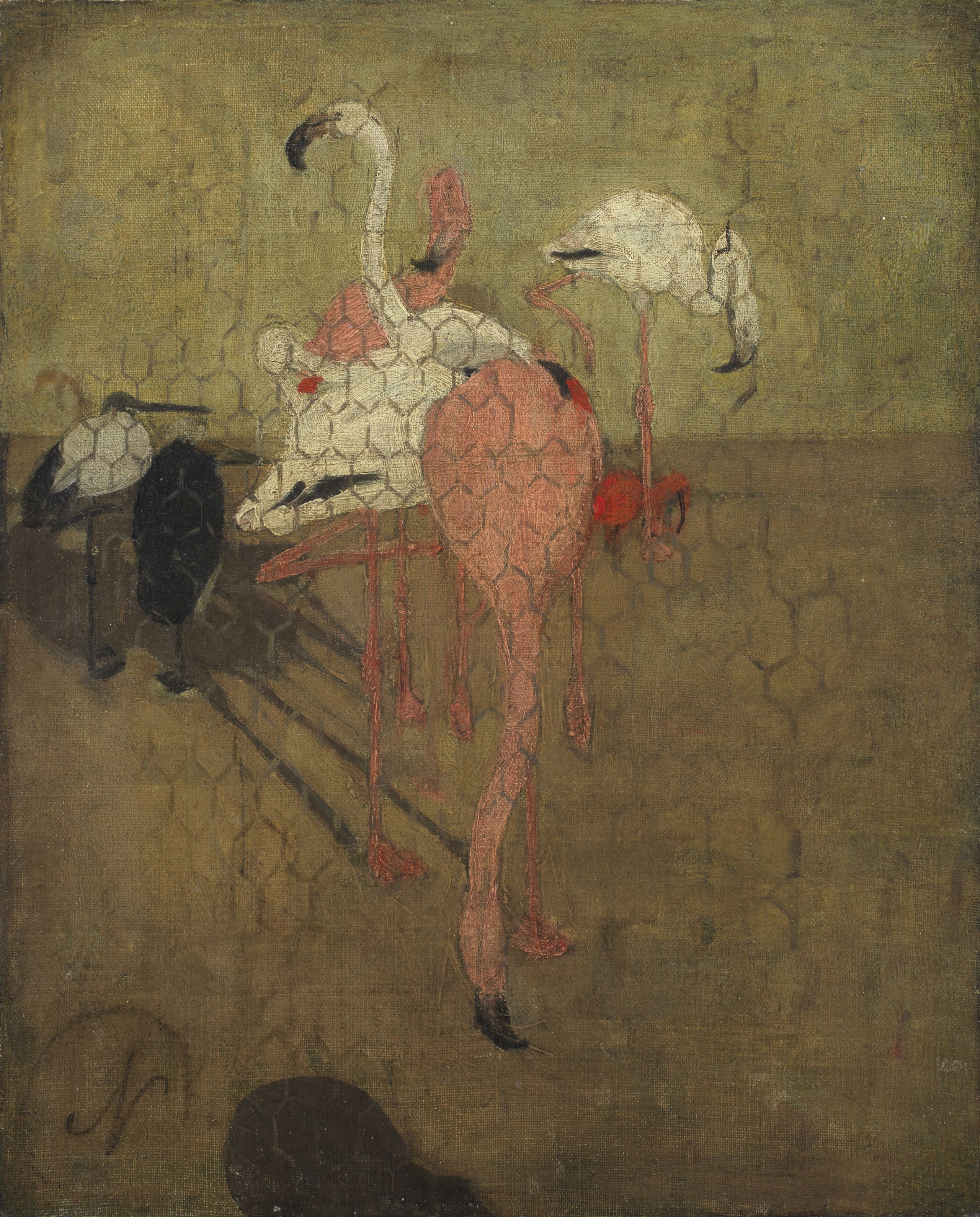
Sir William Nicholson, Flamingos, 1891 © Desmond Banks / Image © The Fitzwilliam Museum
Sir William Nicholson, Flamingos, 1891 © Desmond Banks / Image © The Fitzwilliam Museum
The picture, long retained by the artist himself, was later among several works given to the Fitzwilliam Museum by Nicholson’s friend, the art dealer Lillian Browse in 2006.
The Girl with a Tattered Glove is one of the Fitzwilliam Museum’s most popular pictures. It depicts Marie Laquelle, who worked at the Pheasantry, a famous old house in Chelsea, converted into artists’ studios. She first met Nicholson when he leased a space there in 1909, and shortly afterwards she became his housekeeper and mistress for ten years. Nicholson captures both dignity and pathos in Marie’s pose and expression, underscored by the subtly calibrated details of shabby clothes that characterise her status as a young woman just clinging to respectability.
Jane Munro, Keeper of Paintings, Drawings and Prints, Fitzwilliam Museum describes Sir William Nicholson's, The girl with a tattered glove, 1909 © Desmond Banks / © The Fitzwilliam Museum
Jane Munro, Keeper of Paintings, Drawings and Prints, Fitzwilliam Museum describes Sir William Nicholson's, The girl with a tattered glove, 1909 © Desmond Banks / © The Fitzwilliam Museum
"Why did Nicholson have such a thing about gloves; whether worn by a worn-out young women or carried reverently in the mouth of a greyhound?"
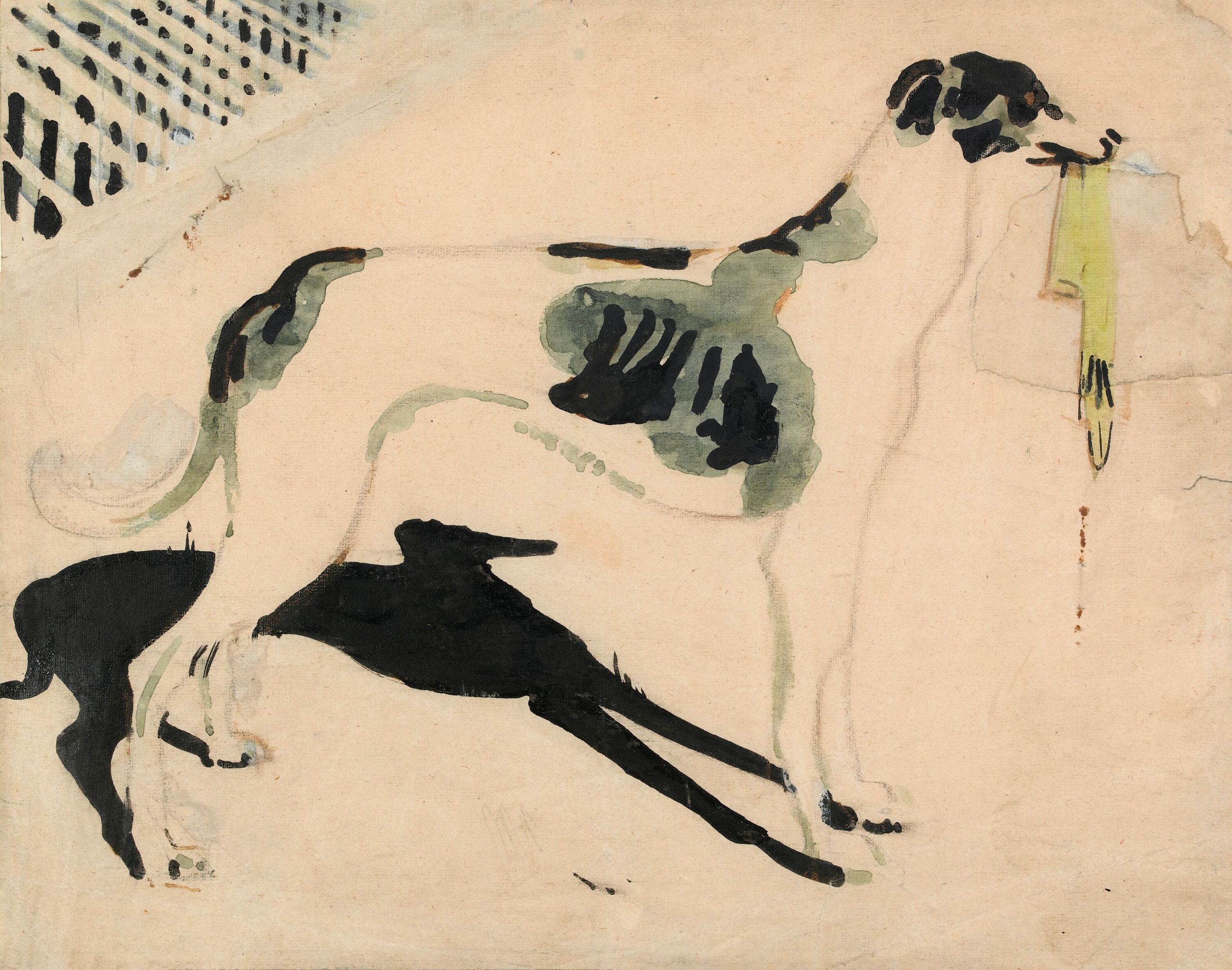
Sir William Nicholson, The Greyhound with the Glove © The Fitzwilliam Museum
Sir William Nicholson, The Greyhound with the Glove © The Fitzwilliam Museum
"It is only through the research for exhibitions such as this, that relatively unknown content is brought together and presented into narrative. The Fitzwilliam only very recently acquired James Pryde's masterpiece The Death Bed, and it was that purchase that provoked the idea for a show devoted to this family partnership, to a passionate dialogue and - perhaps - to a kind of parting of the ways."
Luke Syson, Director of the Fitzwilliam Museum
Beggarstaffs is at the University's Fitzwilliam Museum until 4 August. Admission is free.
